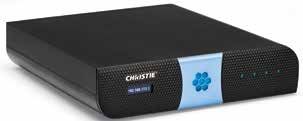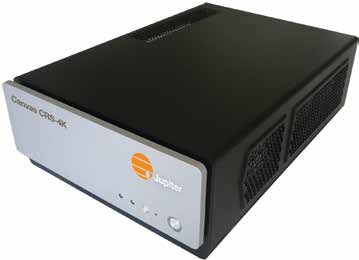In buzzword-afflicted tech, it’s often difficult to arrive at clear-cut definitions. And when it comes to collaboration, there are as many definitions out there as there are companies developing collaborative solutions. But while we all have a slightly different explanation for what collaboration is, we seem to agree on what it’s about: giving people access to the information they need so that they can do their jobs.
Traditionally—as in just a couple of years ago—collaboration was relatively limited to the display: from their laptops, participants in a meeting space could throw up documents and images onto a main display for everyone to see and, eventually, annotate. The prevalence of BYOD and scattered workforces brought mobile into the mix, enabling those who couldn’t physically attend a session to collaborate remotely, transforming smartphones and tablets into, if not primary, but secondary displays. As professionals grow increasingly comfortable incorporating these tools into their workflow, the concept of collaboration has expanded past the display and into the nitty-gritty of how organizations operate.

Oblong’s Mezzanine collaboration solution Remote monitoring and analytics functionality, for instance, has been around for quite a while, facilitating maintenance and decreasing sudden downtime. But Joe Andrulis, vice president of global marketing at AMX in Richardson, Texas—which manufactures the RMS Enterprise Resource Management Suite—notes that more advanced usage of remote monitoring and analytics allows tech managers to make wiser investment decisions. “You can monitor how often particular technology is used, and therefore ensure that you are getting more of the good tools, rather than investing in the tools that seem good on paper but in practice, you find that people don’t really use them that much,” he said. Tech managers may also combine these capabilities with scheduling and building management systems so that spaces are on only when they’re actually in use, extending equipment life cycles while conserving energy. It also serves as a more efficient way of allotting resources: “You’re ensuring that people aren’t spending time trying to find a room that has the right kind of resources, because by doing central management, you know at a moment’s notice whether a room is in use or available.”
At the core of any tech manager’s purchasing decision is security, and how secure a system is really depends on how it’s been designed. Bob Ehlers, vice president of marketing and vertical market development at RGB Spectrum in Alameda, Calif., notes that this is where zero-client environments and virtualization come in: “If you can separate the operator and give him just a keyboard and mouse—no USB, no DVD drives, no Blu-ray—they can’t do anything,” he said. “This is what we do with collaboration. We can create a room where all the computers are separate and the operator doesn’t have any way to touch them because they’re back in a rack somewhere.” The only thing the user can do is send keyboard and mouse commands; the network is air-gapped, “and you prevent users from harming themselves,” or the network.
For Ehlers, collaboration lets people push boundaries while remaining within them. “It’s about facilitating the ability for people to cross business barriers—but they’ve got to be able to deal with whatever the business rules are in place,” he said. “Collaboration can mean many different things, but I think it’s just helping people get the job done in the most effective way possible.”
HEAR NO EVIL: AUDIO

Revolabs FLX UC 1000 Taiden/Media Vision’s new HCS-3900 Series is a digital conference system offering audio recording and control via a central unit that is designed for direct placement in the meeting space rather than an equipment rack. Audio recording and playback is achieved through either a USB interface or SD cards, and individual gain control is available for each mic. Designed to bridge conference participants using VoIP with those on traditional PBX-based systems, the FLX UC 1000 IP and USB conference phone by Revolabs incorporates simultaneous audio capture and playback. The unit comes with four integrated mics, wideband frequency response, and echo cancellation.
www.media-vision.com
www.revolabs.com
AMX by Harman’s Enzo content sharing and conferencing platform JUST WANNA HUDDLE

Designed for users who just want to get their information on the screen, the Altinex ST100-001 ShareTime Collaboration System looks like a flash drive, and connects through any HDMI cable to any HDMI display. Users may connect as many ShareTime devices as there are inputs on the display, or on the (CEC-compatible) HDMI switcher. The system was developed with small group environments—such as conference rooms, libraries, schools, and huddle rooms—in mind. Vaddio’s HuddleSTATION collaboration system features a camera with a sound bar, loudspeakers, mics, and a control dock, and enables participants to use whichever device they want, and whichever application—such as Skype, Microsoft Lync, or WebEx—they desire. The AMX Enzo Content Sharing and Conferencing Platform gives users the ability to access data from the cloud, the Internet, or a USB drive, as well as screen mirroring capabilities from laptops and mobile devices. Prysm’s Cascade Series is aimed at “every meeting space, from the boardroom to the two-person huddle room.” The latest additions to the line are the Cascade 85 and 65 (respectively 85 inches and 65 inches diagonally), which are powered by Synthesis, the company’s collaboration technology. The cloud-based system enables participants to capture, contribute, share, and annotate content such as streaming video, Web apps, documents, presentations, images, and inputs from PCs and mobile devices.
www.altinex.com
www.amx.com
www.prysm.com
www.vaddio.com

NICE GESTURE
Oblong’s Mezzanine goes beyond telepresence to incorporate Infopresence, which lets multiple meeting participants to introduce data into a multi-surface, large-format, shared digital workspace. Users may connect via laptops, tablets, and smartphones within a conference space or remotely. The system is gesture-enabled and spatially aware for those requiring immersive working environments.www.Oblong.com

CAMERA-READY
AMX’s Sereno videoconferencing camera has an eye on confidentiality—and therefore security—with its mechanical shutter, which lets meeting participants block video and microphones. The camera is designed to work with the manufacturer’s Enzo collaboration solution.
www.amx.com

MISSION-CRITICAL COLLABORATION
RGB Spectrum’s Enterprise MCMS (MultiPoint Control Room Management System) combines hardware and software to integrate disparate systems over IP (LAN/WAN). The system lets tech managers consolidate the control of various security subsystems—including video management systems (VMS), legacy DVRs, access control, life safety, building automation, GIS and/or call boxes from multiple sites. Designed to meet the needs of security operations centers and control rooms, the solution supports operators and system resources located anywhere in the world.

COLLABORATION AS A SERVICE
Bluescape’s cloud-based collaboration platform is a subscription service based on the size of the storage space required and the number of users interacting with it. The service supports mobile devices and PCs. For those requiring a main display, the service can be combined with MultiTouch displays, which can be arranged as seamless, tiled, interactive walls or easels.

VISUALIZATION AND MEETINGS ON-THE-GO
Extending its Canvas technology into the huddle room, Jupiter Systems touts its Canvas CRS-4K as a collaborative visualization solution requiring “no software to download, no cables to connect, and no dongles”. The compact unit lets teams in huddle rooms collaborate with remote colleagues running Canvas on almost any device by sharing live video, real-time data, application screens, Web windows, documents, and presentations.
Connect with Christie’s Phoenix

THE WHAT: The Christie Phoenix enables access and control of audiovisual data, regardless of the user’s location. The Christie Phoenix system consists of one or many Christie Phoenix hardware nodes, as well as web-based management software connected through an Ethernet network. It is scalable and uses standard IP network as AV transport and control.
THE WHAT ELSE: Key features include flexible and cost-effective control room display wall and desktop integration; secure transmission of content with support for HDCP; supports a variety of inputs over a network, including HD camera, Network Video Recorder, and desktop capture streams. It is also modular, to allow modest installations to grow over time without the need to re-design the system
WHY THIS MATTERS: “The Christie Phoenix processor system is keeping up with the 4K/UHD video trend with the newly introduced product called the Phoenix Quad-T. The Quad-T can simultaneously ingest 4 HDMI 4K inputs with embedded audio and encode them for distribution across the Phoenix system. Phoenix nodes decode and composite the 4K sources at their native resolution on the system’s video walls. With new features releasing on a regular basis, Christie Phoenix is also readily adaptable to supporting new standards and requirements,” said Dave Muscat, senior director, Americas Region, Visualization, Simulation and Control Rooms at Christie.
Carolyn Heinze is a regular contributor to AV Technology magazine.










